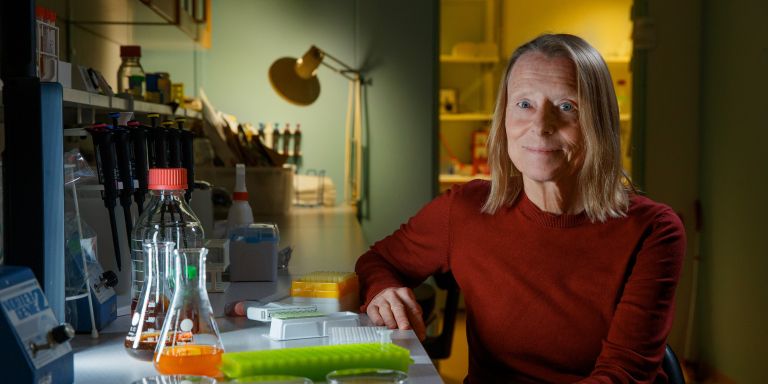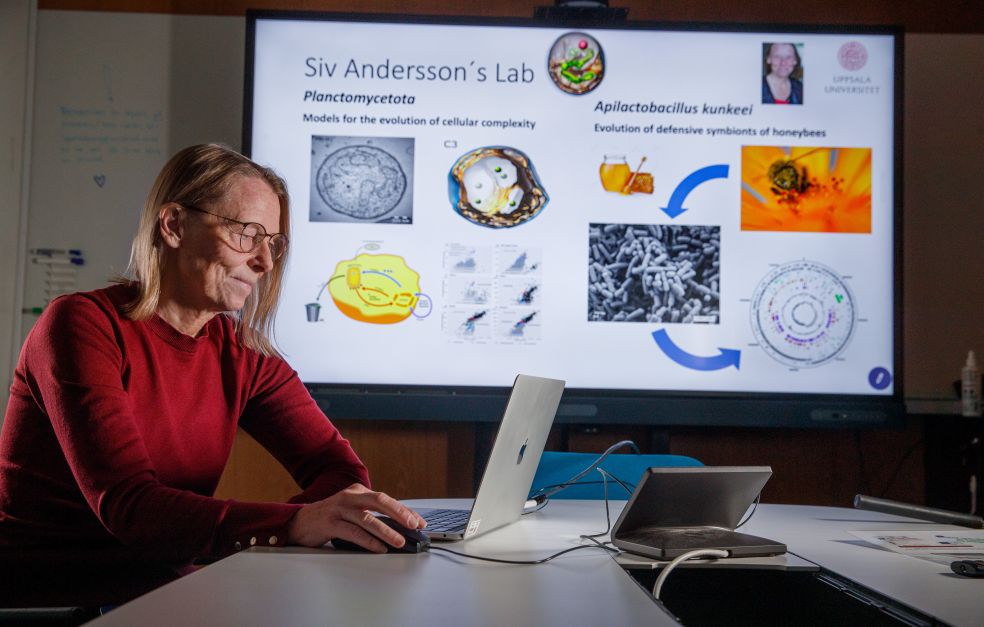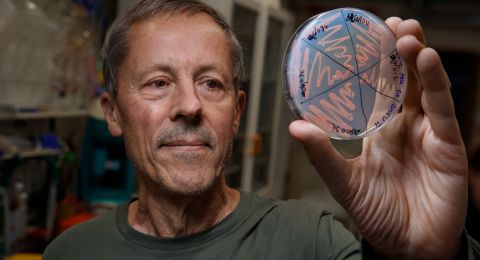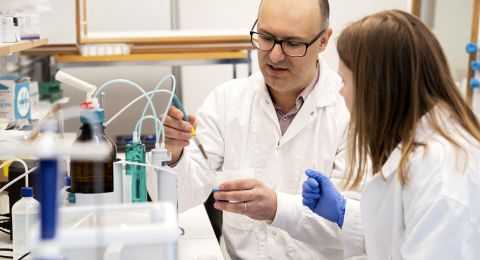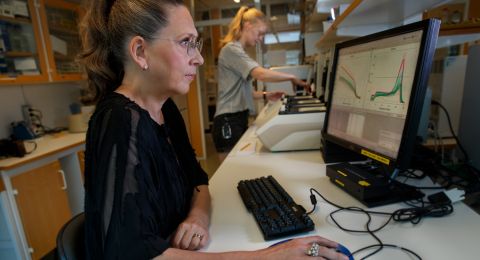Researchers have long suspected that honey bees have a relationship with certain gut bacteria similar to that in humans. But it has proven difficult to determine which bacteria affect the bees’ wellbeing. When Andersson focused her search on the “honey stomach”, she discovered a lactic acid bacterium that provides bee larvae with protection against the disease American foulbrood, which can wipe out an entire colony if it gains a foothold.
Bees use the honey stomach as a transport vessel for nectar between flowers and hive.
“Many people therefore believed that the bacteria in the honey stomach had no function. But when we examined the genome of a certain lactic acid bacterium, we discovered genes for producing antimicrobial peptides,” says Andersson.
Peptides are a type of mini-protein that can act as an antibiotic. Surprisingly, however, by no means all lactic acid bacteria in the colony had the ability to produce these protective substances.
Exchanging DNA
Having created a genetic model in the lab, Andersson’s research team was able to study the bacteria’s genome more closely. They observed how the bacteria could exchange DNA sequences with each other. Among the sequences exchanged were the genes that produce the antimicrobial peptides.
“We believe they freely exchange different sequences in dynamic interaction. Although their individual genomes are very small, this means they have access to a gene pool that is essentially infinitely large,” she says.
The researchers are now attempting to ascertain what drives this genetic interplay.
Bacteria are normally considered highly selfish organisms, but in this case they have developed the ability to cooperate.
“Here, it is not the individual that benefits from cooperation but the entire community of bacteria. We want to find out what drives this dynamic exchange. This understanding could ultimately provide more insight into the evolutionary process.”
To achieve a better understanding, the researchers are using bioinformatics methods as well as laboratory experiments, in which genetically modified bacteria can be cultivated under controlled conditions.
“We think of honey bees as community-building creatures, and it turns out their stomachs harbor an organism that also lives in a communal system. It is fascinating to see how cooperation breeds cooperation in this way.”
The origins of cells
Throughout her research career, Andersson has worked extensively with various symbiotic bacteria that provide their hosts with vitamins and amino acids. This work has sparked curiosity about the differences between bacteria and the eukaryotic cells that make up animals, plants and fungi. Whereas bacterial cells lack a nucleus, eukaryotic cells have both a nucleus and internal structures enclosed by membranes. One example is the mitochondrion, the cell’s energy system, believed to be a remnant of a symbiotic bacterium.
“This awoke my interest in the origin of the eukaryotic cell, a hotly debated topic in many research circles.”
In essence, I want to understand evolutionary processes and how they have developed from the distant past to modern times. How does life actually work, and how has it changed over time?
In particular, she has studied planctomycetes, a type of bacteria discovered nearly a hundred years ago. Planctomycetes have a complex internal network of membranes. This has led some researchers to call them the missing link between bacterial cells and eukaryotes.
“But when we examine them genetically, we see they are bacteria that have developed multiple characteristics causing them to resemble eukaryotic cells. We believe this occurred entirely independently of eukaryotes, however,” she says.
Unlike other bacteria, planctomycetes also have the ability to “engulf” large molecules, proteins, and even other bacteria. This gives them the advantage of being able to store nutrients for periods of scarcity.
“We want to identify the genes that give them these unique abilities. This knowledge could provide more clues about how the eukaryotic cell developed. We want to know what happened when bacteria, eukaryotes, and archaea (prokaryotes) took different evolutionary paths.
New knowledge about the bacterial genome may also lead to new treatment methods. Bacteria with tailored properties have the potential to help fine-tune our own immune systems.
“These days, there is enormous focus on human gut bacteria. Perhaps we can find ways to replace a depleted microbiome or supplement it with new functions, leading to new treatments. The microbiome in a healthy human is far more complex than that of a honey bee, however.”
Understanding the evolution of life
Andersson is one of Sweden’s pioneers in genome research. In the late 1990s, she was one of the first people in the world to map the entire genome of an organism. Her research team mapped the genome of the typhoid bacterium entirely on its own without participating in a major international project.
For some time now, she has been involved in processing project funding applications at Knut and Alice Wallenberg Foundation. But in high school, she dreamed of becoming either a poet or an astronomer.
“Then we learned about the DNA helix in biology class, and I realized it was the path to understanding the evolution of life.”
At university, she was offered a PhD position that involved traveling to Paris to learn how to synthesize DNA, which at that time was a highly complicated process.
“For me, it’s clear that you first need to understand evolutionary processes before you can understand how life works. Although everything in life is constantly changing, we continually discover robust, stable systems. It’s incredibly fascinating.”
Text Magnus Trogen Pahlén
Translation Maxwell Arding
Photo Magnus Bergström

